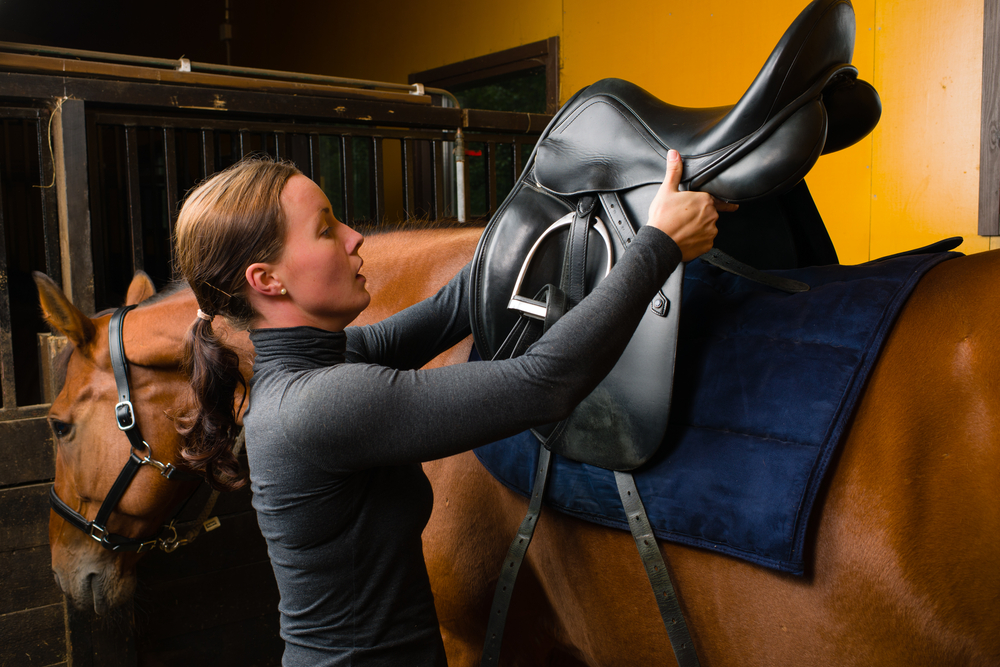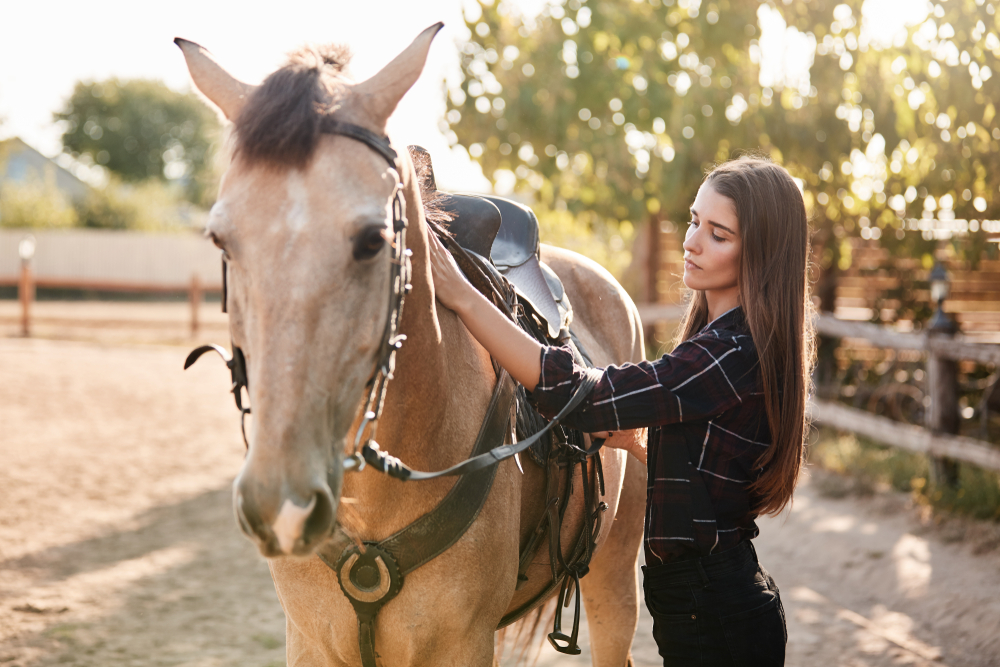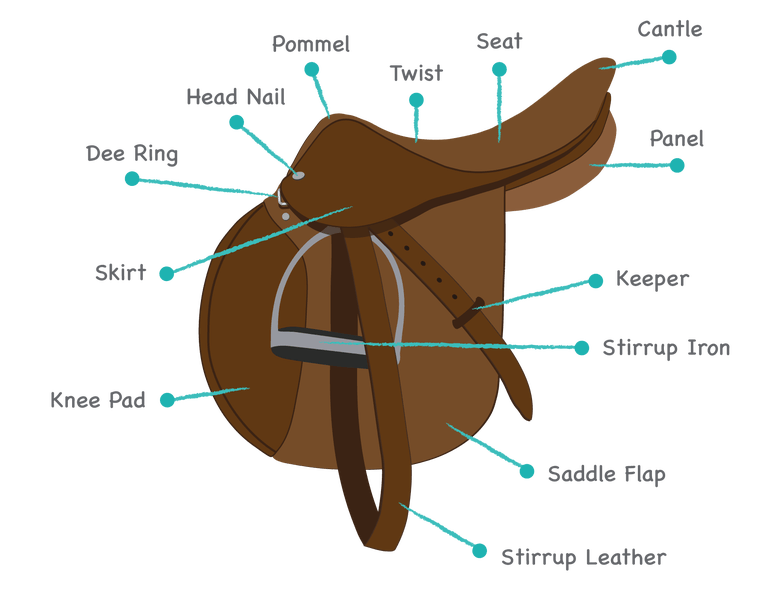
The Very Basics of Saddle Fit
Whinny’s Wisdoms

Hey everybody, Whinny here! I’m going to start with: I know what you’re thinking – “What does a little mouse like Whinny know about saddles and horses?” Well, let me tell you, I’ve been scurrying around these parts long enough to pick up a thing or two, and today, I’m going to let you in on a little secret – saddle fit for horses!
You see, saddle fit is a lot like finding the perfect pair of jeans. You wouldn’t want to wear pants that are too tight or too loose, right? Well, horses feel the same way about their saddles. If a saddle doesn’t fit them just right, it can cause all sorts of problems. So, grab your lassos and saddle up, because we’re going on a wild ride through the world of saddle fit.
The Basics of Saddle Fit
First things first, let’s talk about the basics of saddle fit. A saddle is like a cozy chair for our horsey pals, and just like us, they want it to be comfy. There are a few key things to consider when it comes to saddle fit:
- The Width of the Saddle Tree: The saddle tree is the frame that sits on a horse’s back. It needs to be the right width to match the shape of the horse’s back. If it’s too narrow, it can pinch and cause discomfort. If it’s too wide, it might wobble and make the horse feel like it’s carrying a seesaw.
- The Length of the Saddle: The saddle’s length should match the horse’s back, too. If it’s too long, it can dig into the horse’s loins, and if it’s too short, it might not distribute the rider’s weight properly.
- The Gullet Clearance: The gullet is the space under the saddle that gives room for the horse’s spine. It should have enough clearance so it doesn’t press down on the horse’s back. Think of it like a limbo dance – the saddle has to clear that bar!

Those first three are nearly impossible to fix with pads or shims or anything else. They are the basic framework of the saddle.
- Even Pressure:The saddle should distribute the rider’s weight evenly across the horse’s back. If there are pressure points or sore spots, it’s like having a pebble in your boot – mighty uncomfortable!
- Balance: Just like a rider needs to balance in the saddle, the saddle itself should sit evenly on the horse’s back. If it’s tilted or crooked, it can cause all sorts of trouble for the rider and the horse.
How to Tell if the Saddle Fits
Now that we’ve covered the basics of saddle fit, let’s dive deeper into how to determine if a saddle is a good fit for your four-legged friend. Saddle fit is crucial for your horse’s comfort and well-being, so let’s be thorough:
- The Pinch Test: Run your fingers along the sides of the saddle tree. If it feels like it’s pinching or digging into the horse’s back, it’s time to rethink that saddle. Remember, the saddle should provide gentle contact without causing discomfort or pressure points.
- The Gullet Check: Look underneath the saddle – is there enough clearance for the horse’s spine? You don’t want it rubbing or pressing on that sensitive area. Ideally, there should be about two to three fingers’ width of space between the saddle and the horse’s spine to ensure proper clearance.
- The Sore Spot Scan: After a ride, thoroughly examine your horse’s back for any sore spots or rub marks. Pay close attention to areas where the saddle’s panels make contact with the horse’s back. Sore spots may indicate that the saddle is not distributing pressure evenly, and adjustments or a different saddle may be necessary.
- The Wobble Test: When you’re in the saddle, check if it wobbles or rocks back and forth. A stable saddle is essential for the rider’s balance and the horse’s comfort. An unstable saddle can create an unsettling ride experience and lead to discomfort or injury for both rider and horse.
- The Balance Test: Get a friend to watch you ride. If that saddle looks tilted or crooked, it’s time for some saddle shopping! An imbalanced saddle can cause the rider to sit unevenly and put uneven pressure on the horse’s back. A well-balanced saddle helps maintain a healthy and comfortable riding posture.
- Observe Your Horse’s Behavior: Pay attention to your horse’s behavior while riding. Signs of saddle discomfort may include tail swishing, head tossing, resistance to being saddled, or reluctance to move freely. A horse that’s constantly trying to communicate discomfort is telling you it’s time to reevaluate the saddle fit.
- Consult a Professional: When in doubt, seek the guidance of a professional saddle fitter or a knowledgeable equine veterinarian. These experts can assess saddle fit more comprehensively, considering factors such as your horse’s conformation, muscle development, and any unique needs.
- Regularly Reassess: A horse’s shape can change over time due to factors like age, training, and muscle development. It’s essential to regularly reassess saddle fit to ensure that it continues to provide comfort and performance benefits for both rider and horse.

By following these detailed steps and continuously monitoring your horse’s well-being, you can ensure that your saddle fits correctly and promotes the health, comfort, and happiness of your equine companion. Remember, a happy horse makes for a happy rider, and together, you’ll be ready to conquer any riding adventure that comes your way!
So, next time you’re gearing up for a ride, take a close look at that saddle. Make sure it’s snug as a mouse in a hay pile, and you’ll be off to the races in no time.
Until next week,
~Whinny
P.S. Have you seen the latest Horse Girl Goes to the Vet video over on my YouTube Channel? There’s a lot of great content there, with more being added all the time. It’s a great free resource filled with high-quality horse health information, so don’t miss out!
 Whinny’s Wisdoms is the official blog of Whinny the Clinic Mouse at Springhill Equine Veterinary Clinic in Newberry, Florida. If you liked this blog, please subscribe below, and share it with your friends on social media! For more information, please call us at (352) 472-1620, visit our website at SpringhillEquine.com, or follow us on Facebook!
Whinny’s Wisdoms is the official blog of Whinny the Clinic Mouse at Springhill Equine Veterinary Clinic in Newberry, Florida. If you liked this blog, please subscribe below, and share it with your friends on social media! For more information, please call us at (352) 472-1620, visit our website at SpringhillEquine.com, or follow us on Facebook!
[jetpack_subscription_form title="Subscribe to Whinny's Wisdoms"]


